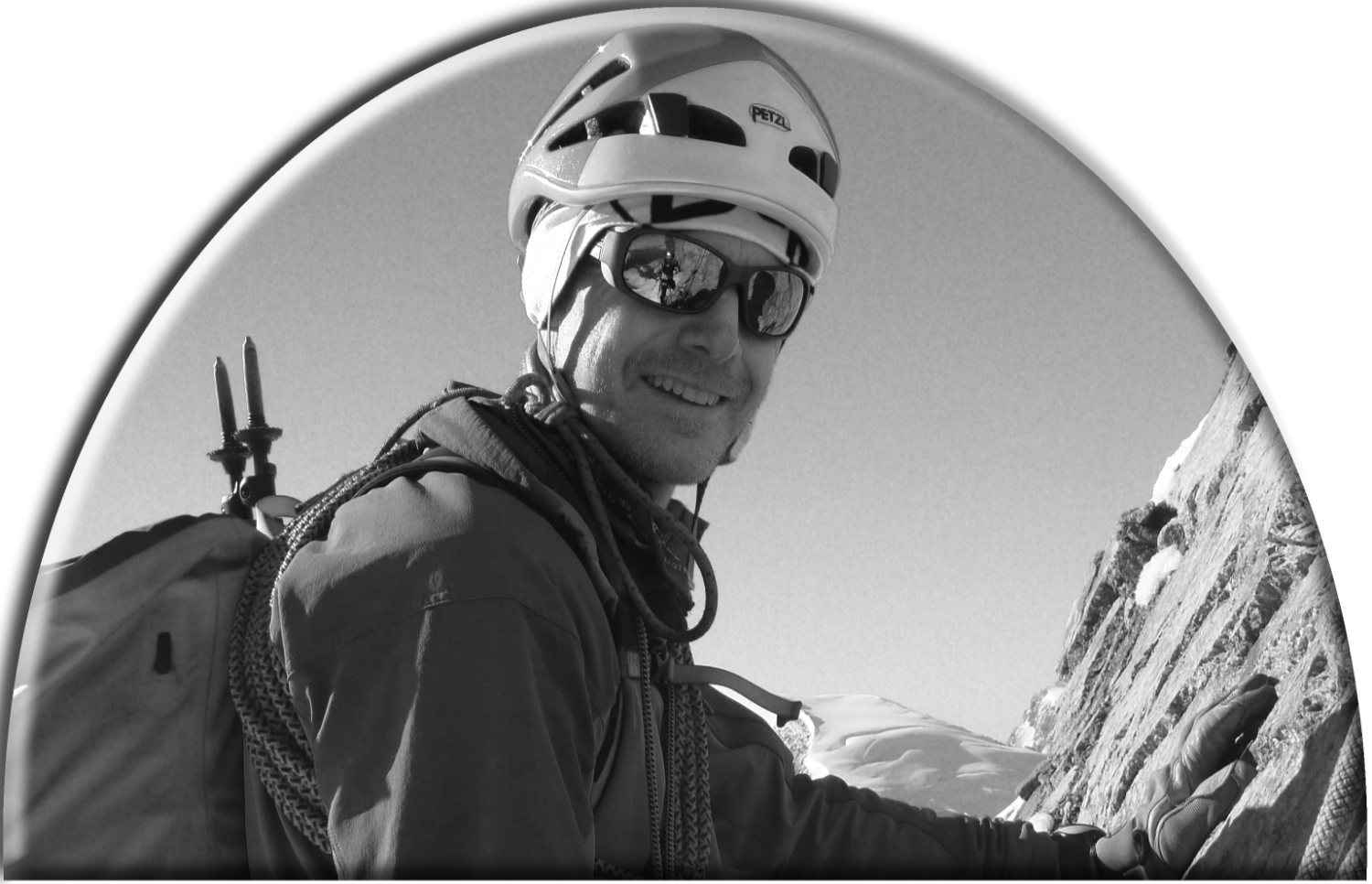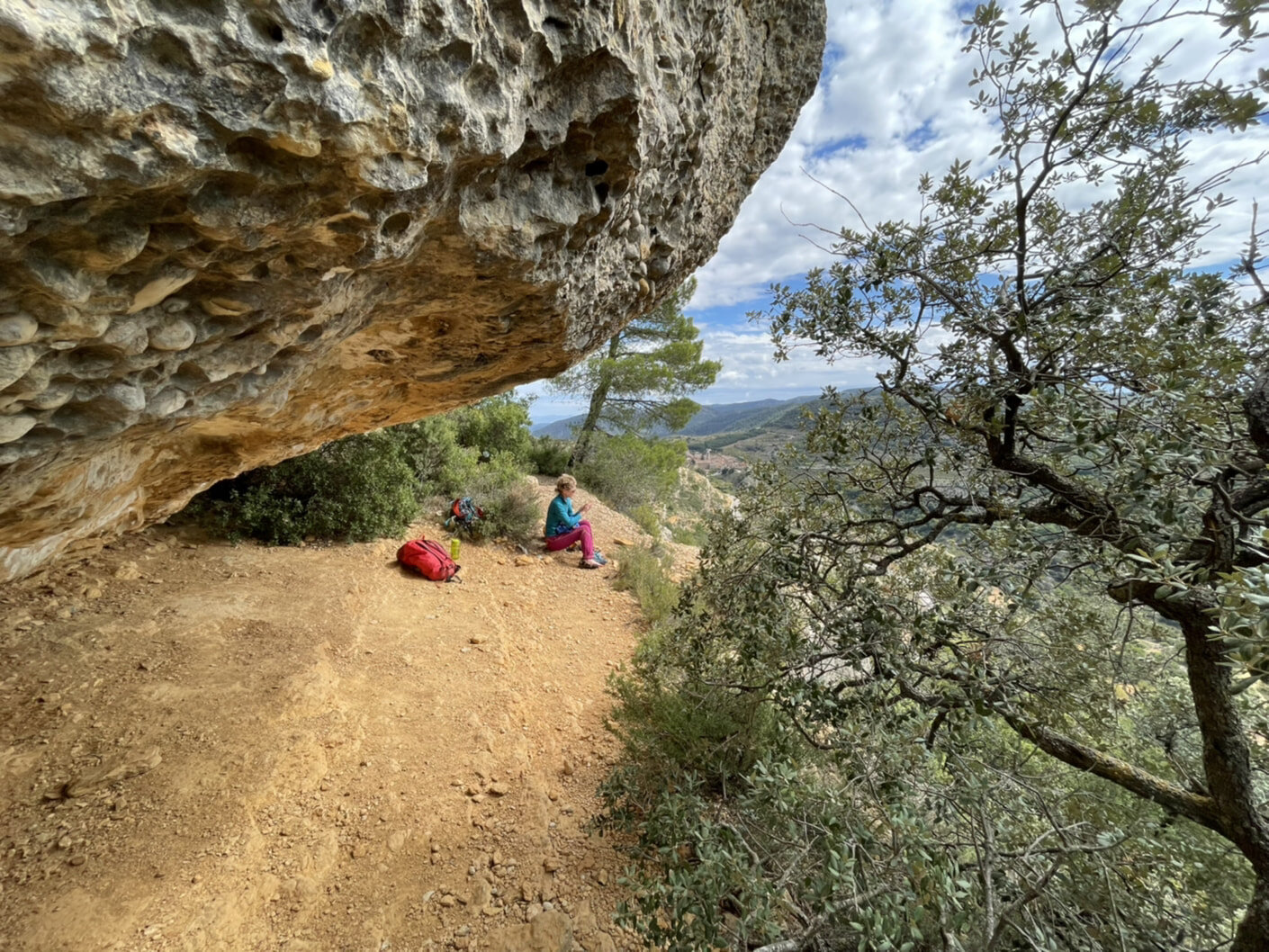¿Habla Inglés?
We find ourselves in the beautiful, tiny village of Vilanova de Prades in the Catalunya, Taragona region of Spain. The village was first mentioned in official documents way back in 1159 AD as a boundary hamlet and hasn’t grown much since, having a population (if Wikipedia is to be belived) of just 117 people. All information signs here are written in Catalan not Spanish, so even our limited Spanish is of no use here. Additionally, English has only been taught in Spanish schools for about… hang on… just checking… Nope, no idea. Google has let me down. Anyway, it’s not very long. What this means is that, apart from on the coast, where everyone speaks English, you can go into a shop etc. and, without asking ¿Habla Ingles? (Do you speak English?), pretty much guess what the answer will be, based on the age of the person you are asking.
Vilanova de Prades tries unsuccessfully to hide behind a rock..
Spanish has been taught in English schools since… erm… well, it hasn’t, so the fault lies with both the British and Spanish education systems. In short, I want my money back.
So we arrive at the campsite Serra de Prades on a Sunday afternoon. The site has more than 190 spots for camper vans, tents, mobile homes etc. and is immaculately looked after (in a dusty Spanish kind of way). The campsite is kind of on the edge of the village. It is also kind of ‘the village’ since it is about the same physical size as the village and caters for more than twice the population. At this time of year though, it is VERY quiet. We almost have the place to ourselves.
We enter the reception and I say to the middle aged woman with the smiley face; “¿Habla Inglés?” “No” she unsurprisingly replies. (Both sides in the conversation silently cursing their respective education systems.)
By a series of mimes and a bout of Google translate, we manage to book ourselves in and find a lovely spot for Gandalf to hang out while we go climbing.
We have been here before so are under no illusions as to what we will find when we go for a walk into the village the following day. First there is a cafe/bar (closed), which advertises itself by putting some random chairs outside a totally anonymous door and scattering a few more tables and chairs randomly in the gutter on the other side of the road.
A single, narrow main road (rather cluttered up with tables and chairs) splits this delightful village in two, with the usual huge church at the centre. Unusually though, there is no village centre or square, only a series of tiny side streets, just 2 blocks deep, either side of the main road. You can walk the whole length of the village in less than 5 minutes. Call it 10 minutes if you explore all the side streets.
Bright lights, big City. Downtown Vilanova de Prades.
There is also a larger and more obvious restaurant/cafe at the end of the village nearest the campsite, which was also closed, or at least it looked closed, but then everything in Spain ‘looks’ closed to the untrained eye. Maybe it was open. Maybe that is where the other 112 residents were hiding? (We had accounted for 4 locals already and if you include the lady in reception at the campsite, 5.)
The village fair bustles with life
The lack of eateries in town is not an issue, we think to ourselves, because the campsite, which is open all year round, has a restaurant, which it also advertises as ‘open all year.’ Which it is, if you count Thursdays to Sundays only as All year round'. We are here Monday to Wednesday, so it looks like Neil is cooking again. Hey ho!
The tiny, but well stocked, supermarket at the campsite provided us with a lovely bottle of chilled Rosé wine which helped us decide that we loved the place anyway.
My attempts to photograph the full moon were somewhat hindered by half a bottle of Rosé and Gandalf photobombing the shot.
A long row of cliffs above the village dominates the view. It is also the reason we are here. Rock climbing.
Just a short section of the cliffs above the village.
Much of the climbing is in the high grades, 6a -8c kind of stuff, but there are routes for mere mortals like ourselves at 4+ - 5+.
Many of my readers will have glazed over on reading that last paragraph. So, let’s write it again for non climbers…
Much of the climbing is impossible unless you are a gecko, but there are lesser routes, which are only a bit terrifying, available for wusses.
Pretending that I know what I am doing
Mrs P showing me how it should be done
Climbing in the lower grades can be summed up by the one line in the guidebook that says, “…often the routes are very demanding…” What this really means is, “Whoever decided on the grades was having a laugh!”
I’m a pretty good climber. I can climb up to 6a (6b on a really good day). One particular 4+ climb I managed to terrify myself up certainly sticks in my mind. I did make it, but it took a lot of swearing. One short series of moves took me about 6 attempts before I was brave enough to go for it.
On returning to terra firma I politely informed Mrs P, “Never in a million (expletive deleted) years is that a (expletive deleted) grade (expletive deleted) 4. For (expletive deleted) sake!”
Can I come down now? Climbs here are short, just 12-15 metres in length, and steep.
All the other climbs were lovely and the view from the climbing area was simply sublime.
A shady spot for lunch
The stunning view from the climbing area
Climbs in this area can be found in the excellent Catalunya Tarragona Climbs guide book.










